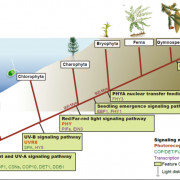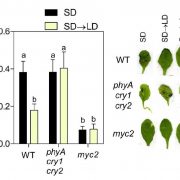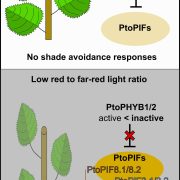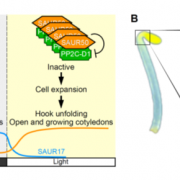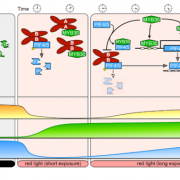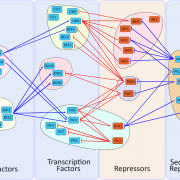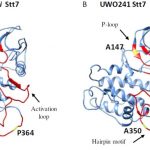PCH1 regulates light, temperature, and circadian signaling as a structural component of phytochrome B-photobodies in Arabidopsis (PNAS)
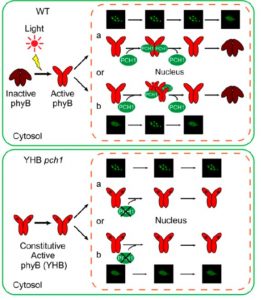 Phytochrome is one of the key photoreceptors in plants, and famous for switching between active and inactive (Pfr and Pr) forms by absorption of far-red and red light; additionally, Pfr converts slowly to Pr independently of light. Furthermore, in the nucleus, the Pfr form can aggregate into photobodies. Huang et al. have identified PCH1 (PHOTOPERIODIC CONTROL OF HYPOCOTYL 1) as a key player in the control of phytochrome dynamics. They showed that PCH1 stabilizes phyB in its Pfr form, and that a constitutively active form of phyB requires PCH1 to form photobodies. They also showed that PCH1 is involved in the contribution of temperature effects on the circadian clock. These findings allowed the authors to further identify the role of photobodies in phytochrome signaling, but also open the door to new ways to control plant growth responses. As they conclude, “We envision that manipulating PCH1 levels might help overcome challenges associated with growing crops under various photoperiod conditions, at different latitudes, and/or under the anticipated increases of temperatures caused by global warming.” (Summary by Mary Williams) Proc. Natl. Acad. Sci. USA 10.1073/pnas.1818217116
Phytochrome is one of the key photoreceptors in plants, and famous for switching between active and inactive (Pfr and Pr) forms by absorption of far-red and red light; additionally, Pfr converts slowly to Pr independently of light. Furthermore, in the nucleus, the Pfr form can aggregate into photobodies. Huang et al. have identified PCH1 (PHOTOPERIODIC CONTROL OF HYPOCOTYL 1) as a key player in the control of phytochrome dynamics. They showed that PCH1 stabilizes phyB in its Pfr form, and that a constitutively active form of phyB requires PCH1 to form photobodies. They also showed that PCH1 is involved in the contribution of temperature effects on the circadian clock. These findings allowed the authors to further identify the role of photobodies in phytochrome signaling, but also open the door to new ways to control plant growth responses. As they conclude, “We envision that manipulating PCH1 levels might help overcome challenges associated with growing crops under various photoperiod conditions, at different latitudes, and/or under the anticipated increases of temperatures caused by global warming.” (Summary by Mary Williams) Proc. Natl. Acad. Sci. USA 10.1073/pnas.1818217116


